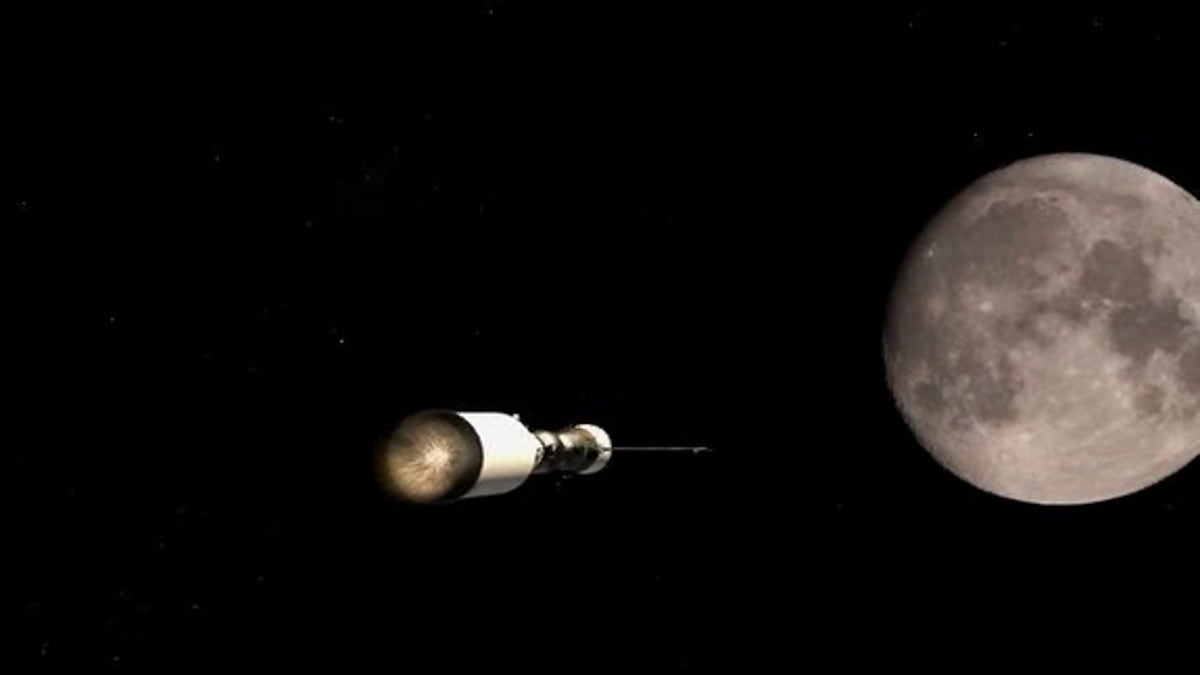
The Apollo 8 astronauts broadcast never-before views of the Earth and moon on December 24, 1968. (NASA)
Fifty years after the first American astronaut rocketed into space, one commercial spaceflight company is hoping to push the envelope even further, with tourist trips around the moon. And now they plan to use a bigger spaceship.
The Virginia-based space tourism firm Space Adventures has brokered commercial rides to the International Space Station for the last 10 years under a partnership with Russia's Federal Space Agency, which provided the Soyuz spacecraft for the flights. The three-person Soyuz vehicle also forms the core of Space Adventures' trip for two around the moon at $150 million per passenger, but the U.S. company today (May 5) announced a new twist: an extra module to give customers more room during the lunar visit.
Space Adventures already has one customer signed on for the circumlunar joyride and is in contract negotiations with a second, which means the first flight could occur as soon as the end of 2015, said the company's chairman Eric Anderson.
Click here to view photos of the first space tourists
Despite a nine-figure ticket price, the firm has already signed up a passenger for a maiden moon journey. And if it inks a second customer soon, the mission could launch within three to five years, company officials say.
"We need that second contract for the mission to go ahead," said Space Adventures president Tom Shelley. "But we're confident that we'll be able to make an announcement about that mission later this year."
A commercial moon shot
Space Adventures arranges flights for its clients aboard Russian Soyuz spacecraft, workhorse vehicles that have been plying the heavens since the 1960s.
Click here to view photos: The First Space Tourists
On the circumlunar trip, customers will travel aboard a Soyuz around the far side of the moon and back -- a journey of seven or eight days, Shelley said. The spacecraft won't land on the lunar surface, but passengers will still get an experience that has been limited so far to a few dozen astronauts with NASA's Apollo program.
Click here to view Giant Leaps: Top Milestones of Human Spaceflight
"You're going to get to within 100 kilometers [62 miles] of the moon's surface, so you're going to get a really close-up view of the moon and that incredible Earthrise as well," Shelley told SPACE.com. "There are only 24 people who have seen that."
Click here to view photos of Our Changing Moon
Early into this long trek, the Soyuz will meet up in low-Earth orbit with a separately launched unmanned rocket. This booster will contain a propulsion system, helping the spacecraft get all the way to the moon.
The Soyuz may meet up with the rocket and head toward the moon immediately, or it may stop at the International Space Station before the rocket rendezvous, according to Shelley.
"Those are the two options," he said. "I can't say which one it would be at this stage. There are a number of factors that go into that decision."
Putting the money down
The moon mission will be different from Space Adventures' one-tourist-at-a-time trips to the space station. The three-seat Soyuz will carry two paying passengers to the moon, with the third seat occupied by a Russian mission commander, Shelley said.
And then there's the price. Space tourists reportedly paid between $20 million and $35 million to get to the station.
"It would be more, considerably more," Shelley said of the moon mission. The per-seat price would be "in the range of $150 million."
One customer overcame the sticker shock and signed his name on the dotted line. That deal was sealed last year, Shelley said. The moon mission could launch within five years if passenger number two signs on soon, he added.
"It's a different destination that's pushing the boundaries a little bit further, and it should be a great event when it happens," Shelley said.
